The Magnolia Warbler is a colorful little bird which breeds in the far northern reaches of North America. In south Florida we see it when on its way to its winter range, which includes the Caribbean islands, far southern Mexico and Central America. A few commonly spend the winter with us.
Although this warbler nests far north of any Magnolia tree, it was named for the location in which it was first "discovered." American ornithologist Alexander Wilson found this species in magnolias near Fort Adams, Mississippi The adults are brightly patterned in yellow, black, blue-gray and white.
I photographed this northbound male in bold breeding colors at Nelson Lake preserve in northeastern Illinois on May 10, 2011:

Exactly eight years later, on May 10, 2019 I found this adult male in almost the same spot:
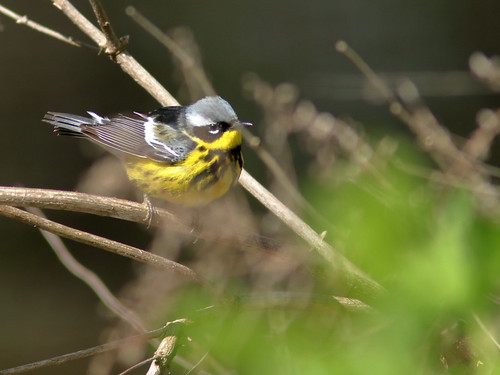
Also in Illinois, I obtained an underside view of another male back in May, 2014. Note the distinctive and unique undertail pattern with two terminal black spots:

This is a fall female (Illinois, September, 2017):

Most of the fall Magnolia Warblers we see here in Florida are first year birds. Their colors are subdued. These were present at Chapel Trail Preserve near our home during December, 2019--


In early January, while leading a nature walk at Chapel Trail I spotted an unusual Magnolia Warbler. It was a very bright yellow female, probably a first year immature bird. Its legs and bill were very pale. Its back was bright yellow without the normal dark streaking, and its head, wings and tail were light tan rather than dark gray. The spots under its tail were brown rather than black. Likewise, its eyes seemed not to be pitch black, but rather were brownish. During the following week I obtained a series of photos to document its plumage:

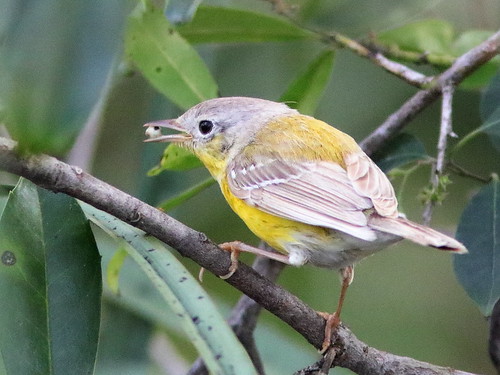
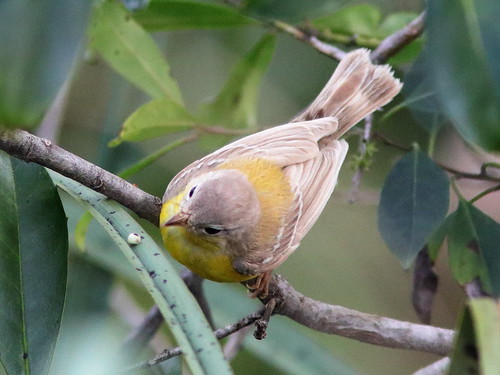
Although I was willing to describe this bird as having "dilute" plumage or possibly as being "leucistic," experts had a more specific name for its faded appearance. They classified it as exhibiting Type 4 oculo-cutaneous albinism. It lacks a specific black melanin pigment, but does produce other lighter melanin. A "pure" albino (Type 1A) would have no melanin and its plumage would be all white with pink eyes. Such a bird would probably not survive in the wild. This Magnolia Warbler may be relatively easy for a predator to locate and capture. (I enjoyed the thrill of discovery, but this may be more than you ever wanted to know!*)
Other warblers present at Chapel Trail were a Black-and-White Warbler...
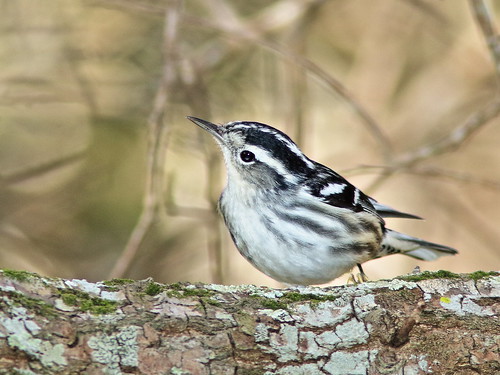

...an Orange-crowned Warbler:

...and many Yellow-rumped Warblers:

The boardwalk at Chapel Trail Nature Preserve:

Common Gallinule reflection:

I could easily start an argument by asking which US bird species is the most common, the most beautiful, the most recognizable, the most abundant, or the most popular. Opinions would be influenced by factors such as geography (Lower 48, Eastern, Western, Northern or Southern, highlands or plains), habitat (urban, rural, forest, grasslands, wetlands, coastal), etc.
There are billions of domestic chickens, but Mourning Doves, American Robins and Red-winged Blackbirds each number in the hundreds of millions and are among the most abundant bird species in the US. The most recognizable to casual observers may include these species as well as many others such as the Bald Eagle, American Goldfinch, the Blue Jay and Northern Cardinal. As to popularity, the cardinal is the State Bird of seven States, followed by the Western Meadowlark in six, the mockingbird in five, and the robin and goldfinch in three each.
Northern Cardinal adult male...

...and female:

The Northern Cardinal is a year-round resident of Eastern and Central North America as well as parts of southern New Mexico and Arizona. Its range extends south into Mexico and Central America and it has been introduced into Hawaii. However, its range has fluctuated over the years. During the first quarter of the 20th Century it nearly disappeared from the Northeastern States, possibly due to severe winter weather.
Probably aided by the increased popularity of bird feeders, its population expanded northward to become quite common in my home State of New Jersey by the 1940s. It is essentially non-migratory, although I often see small flocks of juvenile birds here in Florida during autumn. They may wander and disperse locally.
A male suddenly appeared in a dense stand of Phragmites reeds. The light was perfect, but it was difficult to focus on the bird:



Adult Female:

This is my favorite photo of a female Northern Cardinal, taken in Okeeheelee Park, Florida:
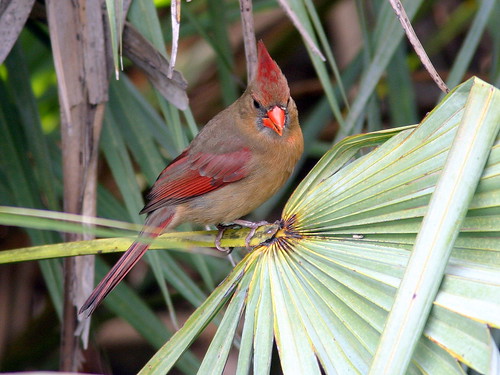
The juvenile cardinal has a dark bill. This one is recently fledged:

Another juvenile:

This older juvenile's bill is turning pale pink:
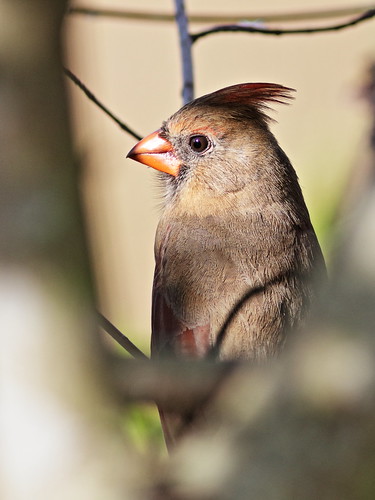
An adult male cardinal shares a small tree with a female Downy Woodpecker:

Other "cardinals"--
A Cardinal Airplant, member of the pineapple/bromeliad family, growing on a Live Oak, is quite common in south Florida:
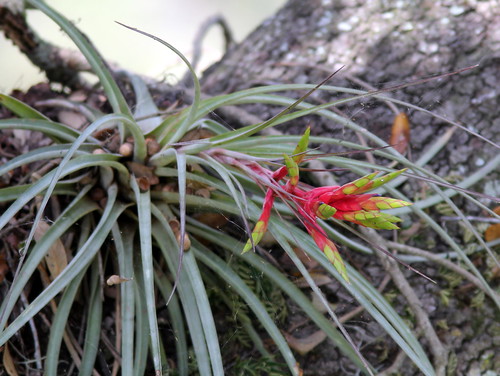
Cardinal Flower, Kane County, Illinois:

Pink sky reflects over the Pine Bank on January 20, 2020...

...with a touch of fog:
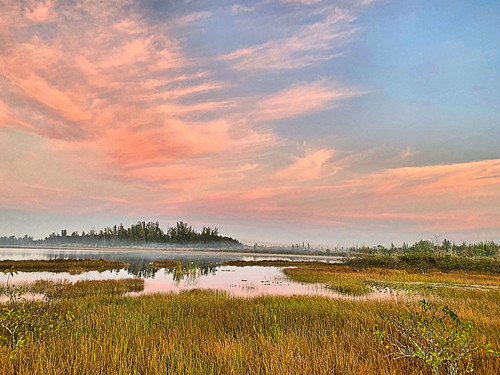
= = = = = = = = = = = = = = =
Linking to :
Camera Critters
Saturday's Critters
Skywatch Friday
Weekend Reflections
BirdD'Pot
Our World Tuesday
Wild Bird Wednesday
Wordless Wednesday (on Tuesday)
All Seasons
_______________________________________________
Please visit the links to all these posts to see some excellent photos on display
_______________________________________________
_______________________________________________
Now I can proudly say that I have walked in each of 10 decades! Maybe this has something to do with why I forgot to process my photos taken on January 1, 2020. There were quite a few from our early morning walk.
My first bird of the year was heard in the dark but not seen, about 40 minutes before sunrise. It was an Eastern Whip-poor-will which had been present for several days and called briefly next to the trail. The first bird we actually saw was a Red-shouldered Hawk,15 minutes before sunrise. It was initially silhouetted against the brightening eastern sky, but then turned sharply and passed by to the west, exhibiting its namesake "shoulders::
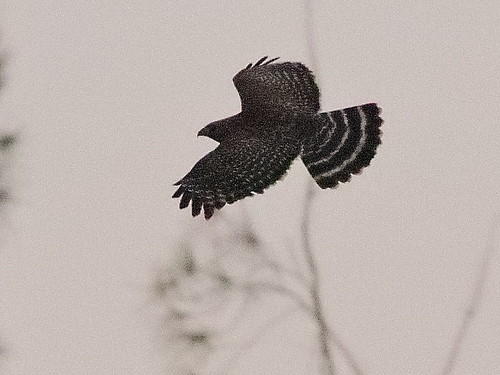
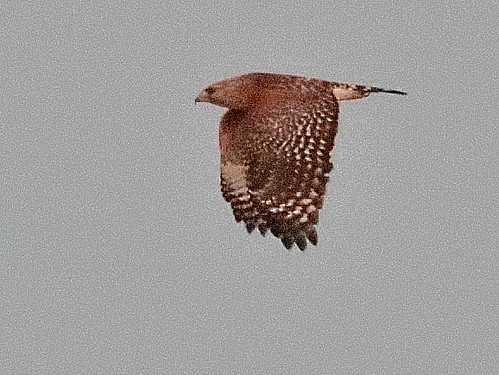
Highlights among the morning's sightings were Yellow-rumped Warblers...


...and acrobatic Yellow-throated Warblers:



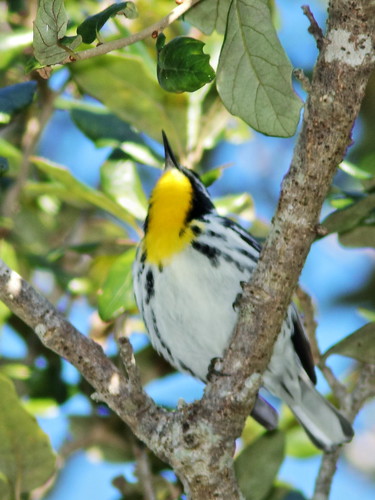
A Ruby-throated Hummingbird visited the waning blossoms on the Firebush (Hamelia patens) hedge...
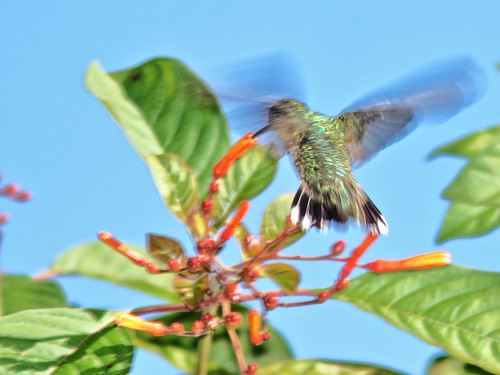
...while the berries attracted warblers and this sun-dappled Blue-headed Vireo:
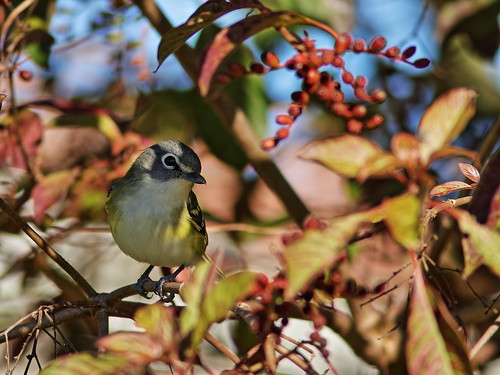

Only three days earlier, the pair of Egyptian Geese which nested in a dense Cocoplum thicket next to our lake visited with their seven newly hatched goslings:
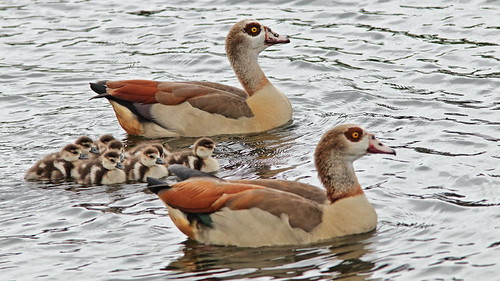
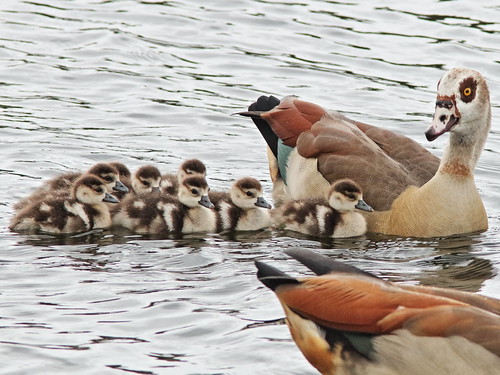
To our surprise, they showed up on our yard again on New Years Day, but this time trailed by an eighth tiny newly-hatched gosling. It could not keep up with its siblings, but the parents waited patiently as it stumbled along behind them. It still had its "egg tooth," indicating it was very young indeed. Had the parents deserted the nest before the last egg was hatched, or was this egg deposited after the birds started incubating the other eggs?
The seven older goslings crowded together, while the lone eighth baby rested outside the group, then tried to join its parents and siblings:

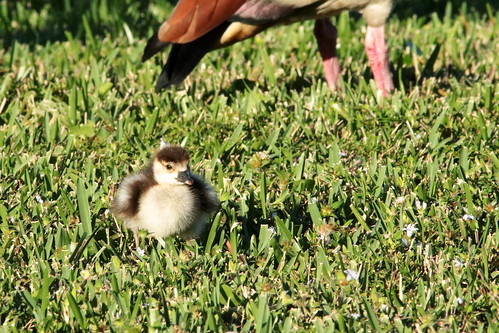
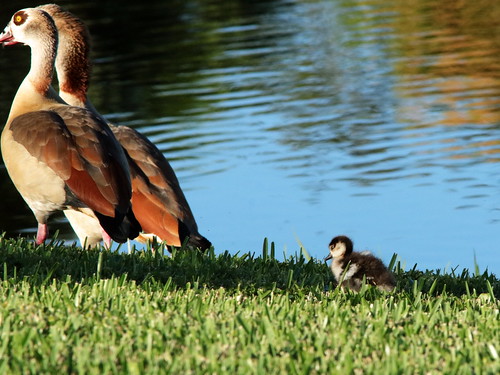
On January 2, the local male (Pride) of the pair of Bald Eagles took a break from incubating and was rearranging sticks on their nest. We expected their first egg to hatch on or about January 4:


The female (Jewel) arrived to exchange incubation duties and Pride flew off:

On January 3, the large male Bobcat stared at me from the edge of the gravel road. Then, rather nonchalantly, he strolled across the track. Note that I forgot to turn off the flash and his eyes reflect my error:

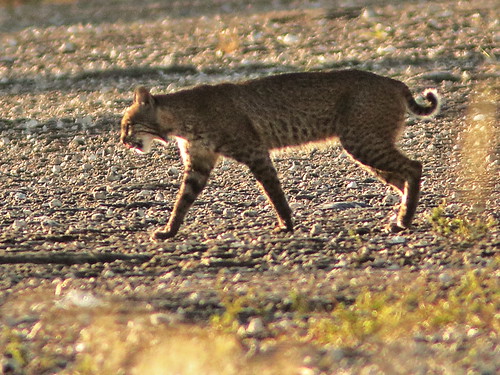

On January 3, a Gray Squirrel munched on Brazilian Pepper berries...

...a Purple Gallinule demonstrated the important construction technique of triangulation (as used in building the Eiffel Tower) by grasping three flimsy stalks of Alligator Flag which supported its weight as it climbed to reach the fruit on top of the stems:
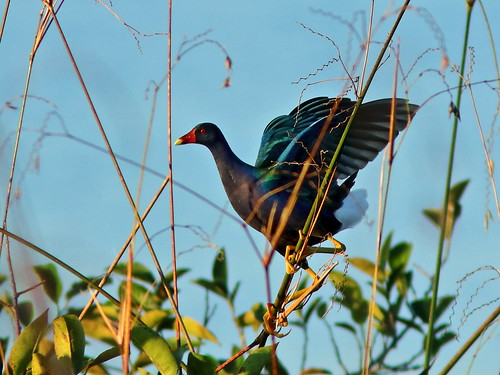
...and a White-tailed Deer doe appeared unexpectedly as I was photographing an egret:

Also on January 3, a male American Kestrel posed nicely on a sign post:

On January 5, the same kestrel exhibited unusual behavior by foraging for insects on the ground:
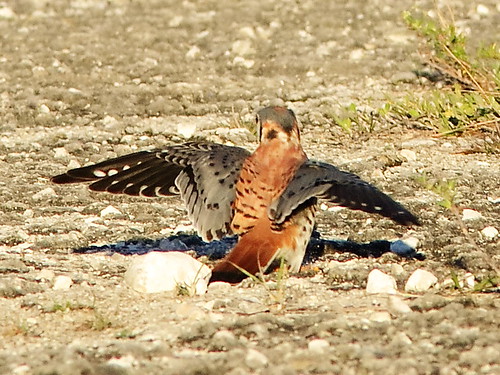

On January 10, the full Wolf Moon was setting as we walked into the wetlands. This DSLR image of the Wolf Moon against the dark sky was taken at 6:32 AM. I was tracking a satellite which almost crossed the face of the Moon-- it missed by about 2 diameters:
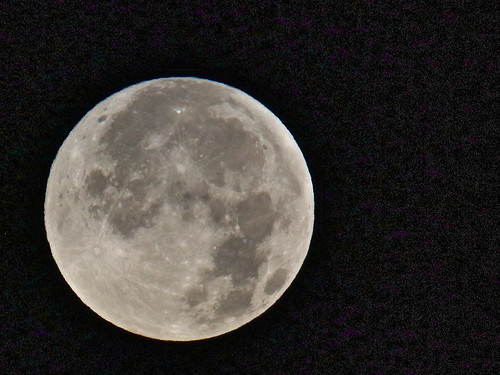
These photos were taken with my new iPhone 11 Pro Max. I was amazed at its excellent low-light performance. The first cuts through the pre-twilight moon-lit darkness at 6:28 AM, 42 minutes before sunrise. MaryLou is ahead of me with her flashlight:

The iPhone captured this moonbeam-burst 35 minutes before sunrise:

Fifteen minutes before sunrise, the Moon had nearly set into the horizon:
 ________________________________________________
________________________________________________
= = = = = = = = = = = = = = =
Linking to Misty's CAMERA CRITTERS,
Linking to Eileen's SATURDAY'S CRITTERS,
Linking to SKYWATCH FRIDAY by Yogi, Sylvia and Sandy
Linking to WEEKEND REFLECTIONS by James
Linking to BirdD'Pot by Anni
Linking to Our World Tuesday by Lady Fi
Linking to Wild Bird Wednesday by Stewart
Linking to Wordless Wednesday (on Tuesday) by NC Sue
Linking to ALL SEASONS by Jesh
________________________________________________
Please visit the links to all these posts to see some excellent photos on display
________________________________________________





























































